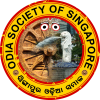Cuisine And Language
Singaporean cuisine is also a prime example of diversity and cultural diffusion in Singapore. In Singapore's hawker centres, for example, traditionally Malay hawker stalls selling halal food may serve halal versions of traditionally Tamil food. Chinese stalls may introduce Malay ingredients, cooking techniques or entire dishes into their range of catering. This continues to make the cuisine of Singapore significantly rich and a cultural attraction.
Some favorite local foods include:

| • | Bak kut teh |
| • | Char kway teow |
| • | Hainanese chicken rice |
| • | Hokkien mee |
| • | Ketupat |
| • | Laksa |
| • | Nasi lemak |
| • | Rojak |
| • | Roti prata |
| • | Satay |
Singaporeans also enjoy a wide variety of seafood including crabs, clams, squid, and oysters. One favorite dish is the stingray barbecued and served on banana leaf and with sambal (chilli).
Language
There are four official languages in Singapore: English, Chinese, Malay and Tamil. In general, English tends to be the language spoken widely in the business, education and government sector of Singapore. But colloquially, the Singaporean also speaks a diverse and mixed language that can involve English, Chinese, Malay and Tamil, depending on the circle one is associated with, the age group, the race and the location.
The English used is primarily British English, with some American English influences. The local colloquial dialect of English is known formally as Singapore Colloquial English (though it is more commonly called "Singlish"), and has many creole-like characteristics, having incorporated much vocabulary and grammar from various Chinese dialects, Malay, and Indian languages. Singlish is basically identical to Manglish (the English dialect of Malaysia), and is the usual language on the streets, but is frowned upon in official contexts, and this matter has been brought up in recent years in the Parliament and the ruling party. English used among the population generally became more widespread after the implementation of English as a first language medium in the Singapore education system in 1980.
Mandarin Chinese is the second most commonly-spoken language among the Singaporean Chinese population. It became widespread after the start of the Speak Mandarin campaign during 1980, which aims to make Mandarin the common speech tongue among the Chinese in Singapore. In 1990s, effort was taken to target the English-educated Chinese. Colloquially (on street), the Mandarin in Singapore is spoken in a mixed way similar to Singlish, in which Mandarin is often mixed with other Chinese dialects, English or Malay words. Such colloquial Dialect is known as Singdarin. The accent of Mandarin Chinese language spoken in Singapore is largely influenced by Chinese dialects such as Hokkien, Cantonese, Teochew etc and in comparison to the standard Beijing accent, it has no "r" tone, exhibiting a Chinese accent unique to Singapore and also found in neighbouring.
